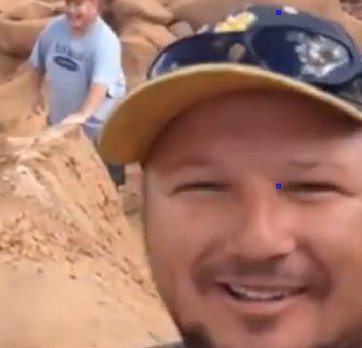Three men from Utah destroyed a 200 million year old rock formation in Goblin Valley State Park in Emery County, Utah. The men claimed that they thought the stone might fall on someone and they decided to destroy it. However, they are facing felony charges.
The video was posted on You Tube and it has over 2 million views in 2 days. “Three men, tagged as Dave Hall, Glenn Taylor and Dylan Taylor, push over large rock boulders in Goblin Valley, Utah in this video posted to Hall’s Facebook page.”
“ They claim they are preventing a safety hazard, but the activity in the video is likely illegal. Utah state parks authorities are investigating, and the three are facing felony charges. The video has since been removed from Facebook.”
Goblin Valley State Park is a state park of Utah, USA.
Its eminent feature is its thousands of hoodoos and hoodoo rocks, which are formations of mushroom-shaped rock pinnacles, some as high as several meters. The distinct shape of these rocks comes from an erosion-resistant layer of rock atop softer sandstone.
Hiking is permitted in the park, which features three marked trails.
HISTORY
Evidence of Native American cultures, including the Fremont, Paiute, and Ute, is common throughout the San Rafael Swell in the form of pictograph and petroglyph panels. Goblin Valley is noted for several rock art panels as well as the rock formations. The secluded Goblin Valley was then found by cowboys searching for cattle. Then in the late 1920s, Arthur Chaffin, later owner/operator of the Hite Ferry, and two companions were searching for an alternate route between Green River and Caineville. They came to a vantage point about 1 mile (1.6 km) west of Goblin Valley and were awed by what they saw – five buttes and a valley of strange goblin-shaped rock formations surrounded by a wall of eroded cliffs. In 1949 Chaffin returned to the area he called ‘Mushroom Valley’. He spent several days exploring the mysterious valley and photographing its scores of intricately eroded rocks.

Panorama of Goblin Valley State Park, Utah, WIKIPEDIA
Publicity attracted visitors to the valley despite its remoteness. In 1954 it was proposed that Goblin Valley be protected fromvandalism. The state of Utah later acquired the property and established Goblin Valley State Reserve. It was officially designated a state park on August 24, 1964.
In October 2013, a group of Boy Scout leaders who had been camping in the area with a Church of Latter Day Saints group intentionally knocked over a hoodoo.[3]

One of the three men smiling, after his friend Taylor destroyed the rock.
Plants and animals
Vegetation is limited to hardy desert species that can endure blowing sand and hot dry surface conditions. Vegetation and wildlife exist on a limited supply of water in the arid desert environment. Plants have adapted by reducing the size of their leaves to reduce evaporation, with some having a waxy coating on their leaves that reduces water loss. Flora occupying Goblin Valley include Mormon tea (joint fir), Russian thistle, Indian ricegrass, and various cacti. Juniper and pinyon pine grow at slightly higher elevations.
Animals often must travel many miles to find water or else wait for thunderstorms to provide moisture. Most animals in the area are nocturnal, venturing out only in the cooler evenings to hunt and forage for food. Some animals get water from the food they eat and go for weeks without a drink of water. Jack rabbits, scorpions, kangaroo rats, pronghorn, kit foxes, midget faded rattlers, lizards, andcoyotes are found within and near the park.
Geology
The unusual stone shapes in Goblin Valley result from the weathering of Entrada Sandstone. They consist of debris eroded from former highlands and redeposited on a former tidal flat of alternating layers of sandstone, siltstone and shale. The rocks show evidence of being near an ancient sea with the ebb and flow of tides, tidal channels that directed currents back to the sea and coastal sand dunes.
Joint or fracture patterns within the Entrada’s sandstone beds created initial zones of weakness. The unweathered joints intersected to form sharp edges and corners with greater surface-area-to-volume ratios than the faces. As a result, the edges weathered more quickly, producing the spherical-shaped ‘goblins’.
SOURCE: B4IN & WIKIPEDIA
No comments:
Post a Comment